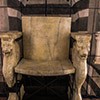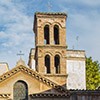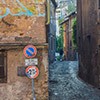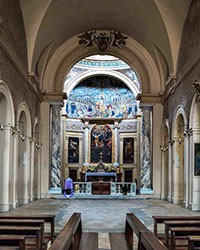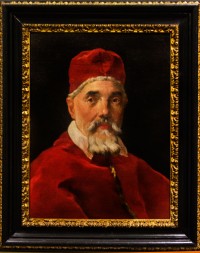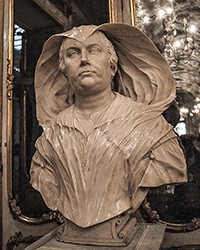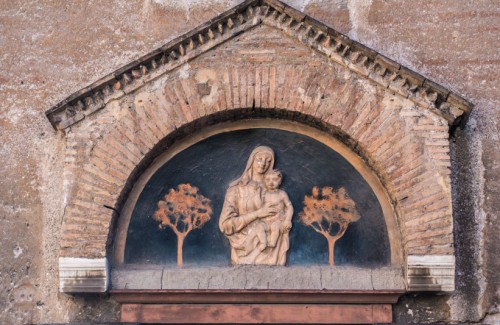
Santa Maria in Cappella
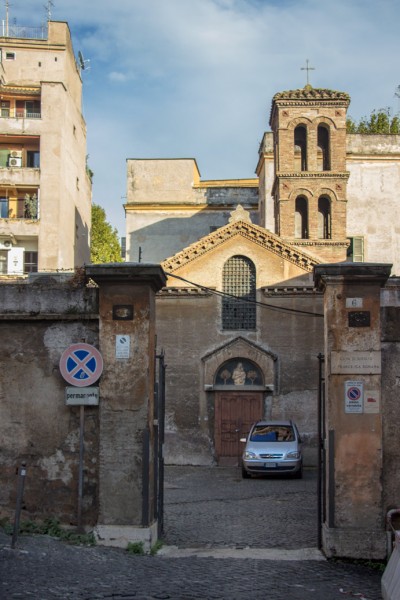
Church of Santa Maria in Cappella
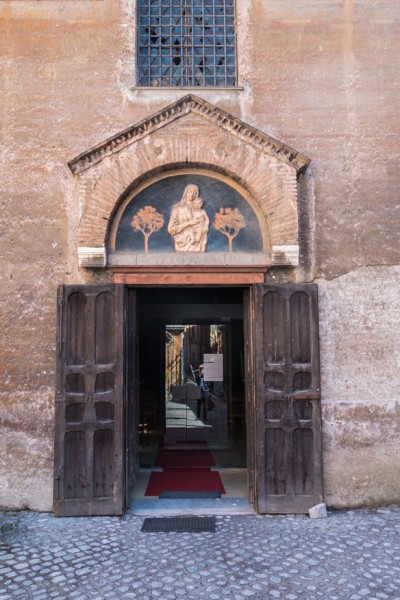
Church of Santa Maria in Cappella,main entrance
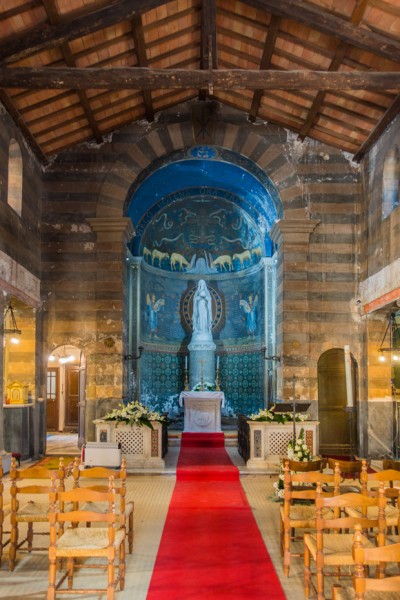
Interior of the Church of Santa Maria in Cappella
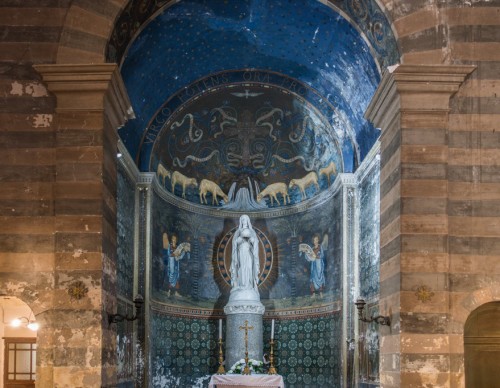
Interior of the Church of Santa Maria in Cappella, the apse
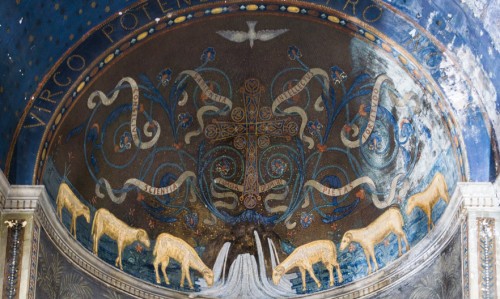
The apse decoration, church of Santa Maria in Cappella
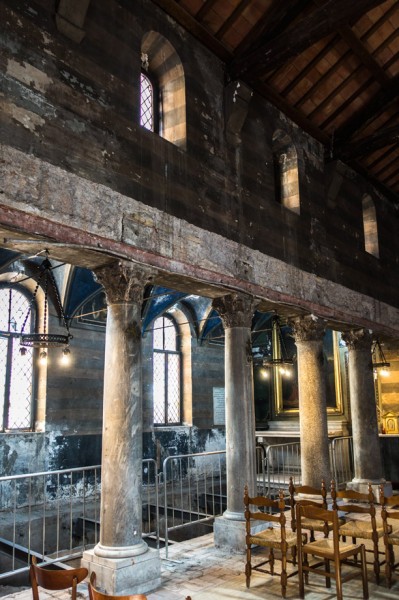
Santa Maria in Cappella, left nave of the church
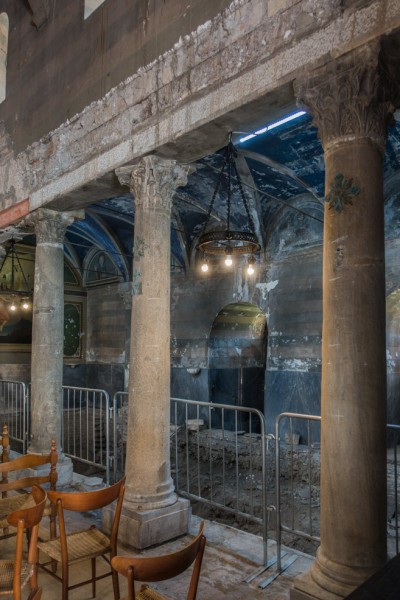
Santa Maria in Cappella, right nave of the church
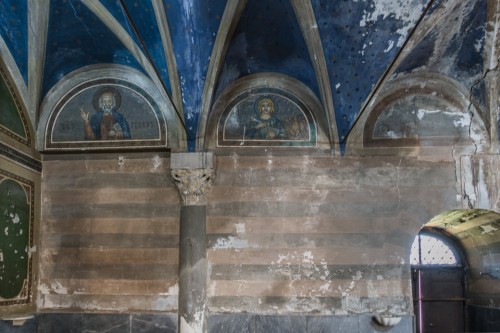
Church of Santa Maria in Cappella, saints in the lunettes
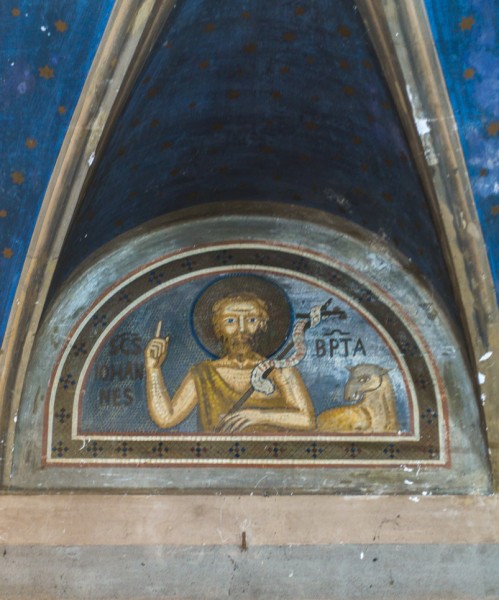
Church of Santa Maria in Cappella, St. John the Baptist - one of the lunettes
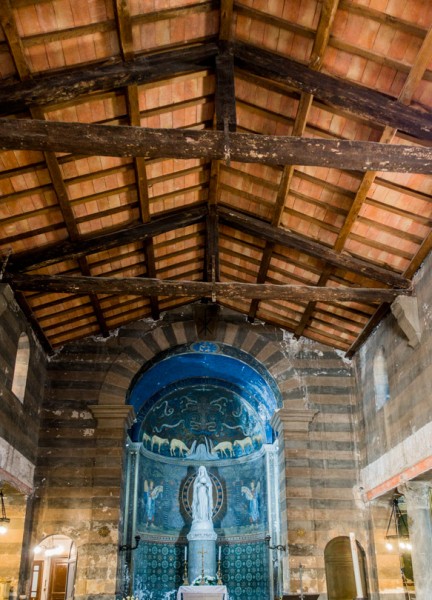
Church of Santa Maria in Cappella, open roof truss

Church of Santa Maria in Cappella, bishop’s throne
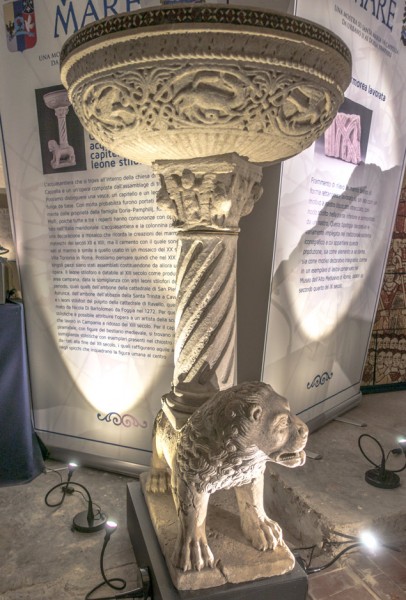
Church of Santa Maria in Cappella, baptismal pool

Santa Maria in Cappella, the bell tower
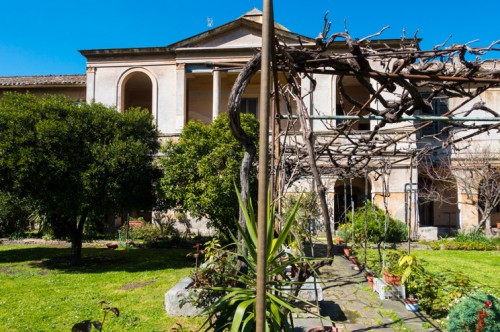
Santa Maria in Cappella, next to the buildings of the church - the Francesca Romana Retirement Home
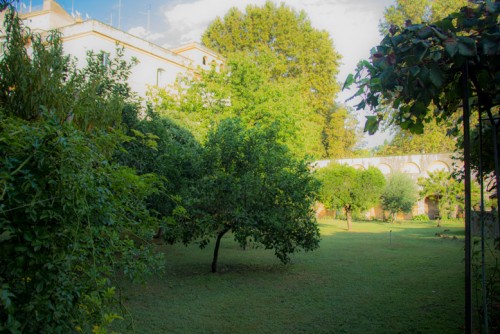
The garden of the Francesca Romana Retirement Home
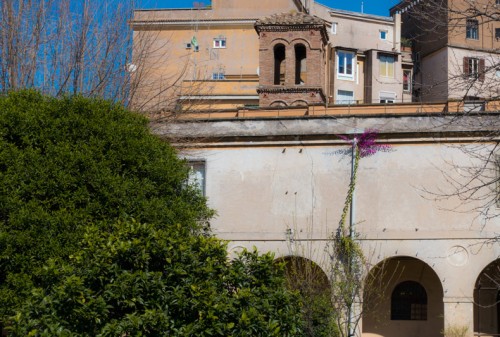
The Francesca Romana Retirement Home and the church of Santa Maria in Cappella
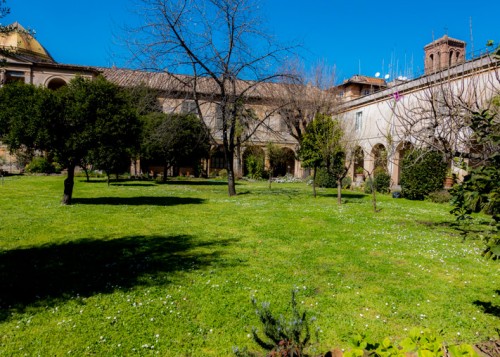
The garden of the Francesca Romana Retirement Home
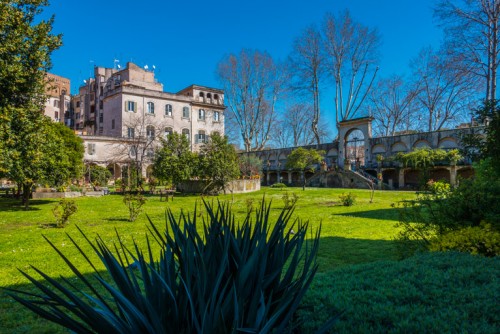
The garden and the buildings of the Francesca Romana Retirement Home
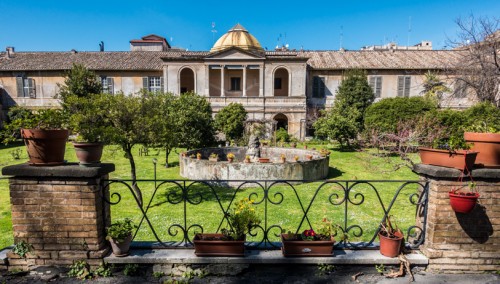
The buildings of the Francesca Romana Retirement Home, seen from the Tiber
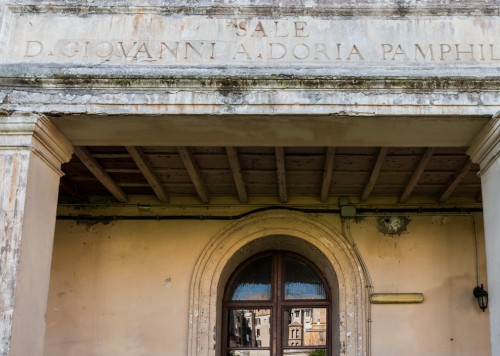
The Francesca Romana Retirement Home, information about the foundation of the family Doria-Pamphilj

A small street in Trastevere leading to the church of Santa Maria in Cappella
When I saw the façade of this tiny church for the first time, with its picturesque bell tower (campanile), my intuition told me that in front of my very eyes there is a pearl of subtle beauty and unprecedented atmosphere from centuries long gone. At that time it was completely ruined, while its walls – supported by wooden beams – seemed as if they would fall apart at any moment. The damp, dark interior promised little. As years passed I returned numerous times to this lovely spot on the Trastevere, hoping that one day it would be restored to its proper glory. And so it has come to pass. Today it is a place which cannot be overlooked in journeys through Rome, although it presents itself rather modestly, one could even say – miserably.
When I saw the façade of this tiny church for the first time, with its picturesque bell tower (campanile), my intuition told me that in front of my very eyes there is a pearl of subtle beauty and unprecedented atmosphere from centuries long gone. At that time it was completely ruined, while its walls – supported by wooden beams – seemed as if they would fall apart at any moment. The damp, dark interior promised little. As years passed I returned numerous times to this lovely spot on the Trastevere, hoping that one day it would be restored to its proper glory. And so it has come to pass. Today it is a place which cannot be overlooked in journeys through Rome, although it presents itself rather modestly, one could even say – miserably.
We do not know, how far into the past the roots of the building reach, however it was consecrated around the year 1090 and was most likely dedicated to Santa Maria della Pigna (Our Lady of the Pine Tree). Its founder was the pious, although rather unknown Damasus, who in hope of posthumous life built a church and furnished it with relics of the Virgin Mary herself (fragment of her robes?), but also by a rather unknown St. Peter, Pope Cornelius, Pope Callixtus, Pope Felix, the martyr Hippolytus, and others. All of this can be discerned from a tablet preserved in the interior with an epigraph. The campanile also dates back to the same time.
The three-nave church with a broad apse was most likely designated for the merchants docking at the nearby Tiber shore. At the end of the XIV century the church was renovated and converted into a hospital chapel for the Hospital of the Holy Savior (Ospedale di Santissimo Salvatore), added in the meantime, in which the poor from the Trastevere were treated. The hospital was founded by the in-laws of a woman, who would become one of the most revered saints and protectors of the Eternal City – Frances of Rome (Francesca Romana). She also cared for this building. The hospital as well as a place for charitable aid was run by the Oblate Sisters, from the Tor de Specchi monastery found at the foot of Capitoline Hill. One of the hospital rooms occupied the right nave of the church. The hospital existed here until 1440, but we do not know why it had ceased operations.
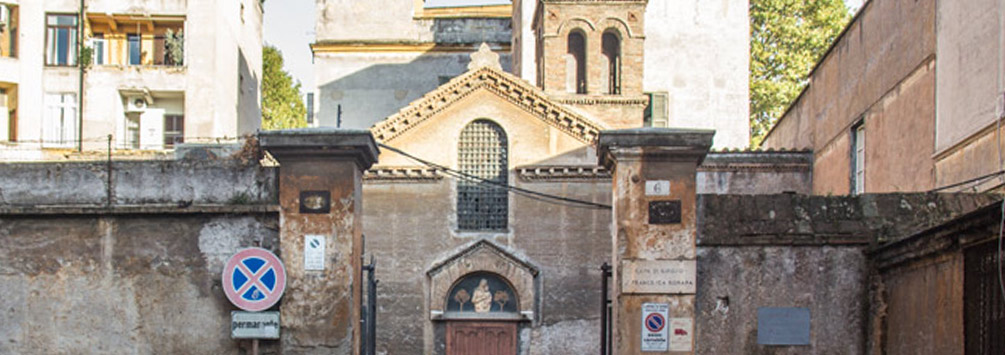
The next chapter in the history of the church began in the middle of the XVI century, when the deteriorating building was taken over by the Guild of Coopers. The church was renovated, doing away with the side naves in the process. In this way rows of Roman columns were covered. Why – we do not know: perhaps the church was too broad for its new caretakers, or perhaps they needed new rooms for themselves, which could explain why the left nave was converted into a barn. Nevertheless, the church remained until the XVII century, when it was agreed to once again establish a hospice there – this time for pilgrims from Bohemia, however the idea did not come to fruition, since its initiator, cardinal Mellini had died. Then, the building was seized by an ambitious Roman woman – the sister-in-law of Pope Innocent X – Olimpia Maidalchini. She was not overly interested in the church, but rather in the land surrounding it, located by the river and a perfect spot for summer relaxation. It was at her initiative that a Baroque suburban villa was created here – a meeting place for sophisticated company, who occupied themselves with parties in the park and the small palace (Casino del Belvedere) with a view of the Tiber. We cannot be sure whether people did indeed bathe in the river, as a Trastevere legend would have it. However, the news that a brothel was located here seems exaggerated.
The church requiring renovation was not taken care of until a well-known funder of Roman churches – Olimpia’s son, Camillo Pamphilj changed its façade and the interior in the spirit of the Baroque. The façade was adorned with two Ionian pilasters supporting the pediment. It was decorated with two frescoes – one depicted Frances the Roman, the other Pope Gregory the Great. Immediately above the enterance there was a tondo with the image of Our Lady.
Subsequent centuries brought only the slow deterioration of the church as well as the adjacent land. This continued until the middle XIX century, when representatives of the Doria-Pamphilj family remembered that their ancestors had received the land and the church from Pope Innocent X in order to aid the weak and the infirm. Then, they entrusted the well-known architect, Andrea Busiri Vici with the design of a number of buildings designated for the care over the chronically ill. This was the first such a place in the city and it still fulfills its function today (the Francesca the Roman Retirement Home). Its tenants are cared for by the Daughters of Charity of St. Vincent de Paul. It is worth entering the garden covered with orange trees, where the elderly walk about and rest, looking with interest at every visitor. Today it is one of the largest private gardens in the city center – it, as well as all of its arrangements and the church still belong to the Doria-Pamphilj family.
The church was restored in 1858. It was then that the walls separating the main nave from the side naves were taken down restoring the building’s medieval look but destroying all of the original decorations in the process, adorning it with contemporary paintings. Unfortunately, in subsequent decades the church once again deteriorated, then finally – threatening to collapse – it was definitely shut down in 1982.
And thus we have come to contemporary times. The building renovated in 2011 was made available to the public in 2017. Today concerts are organized inside and a museum (Museo di Santa Maria in Cappella) functions. The enterance fee includes sightseeing in the church and its facilities, where we can see a rather modest collection, including liturgical vessels from the XIX century. One of the most interesting exhibits is most likely a marble baptismal font with a lion, albeit put together into one whole out of many parts, but of original Roman design.
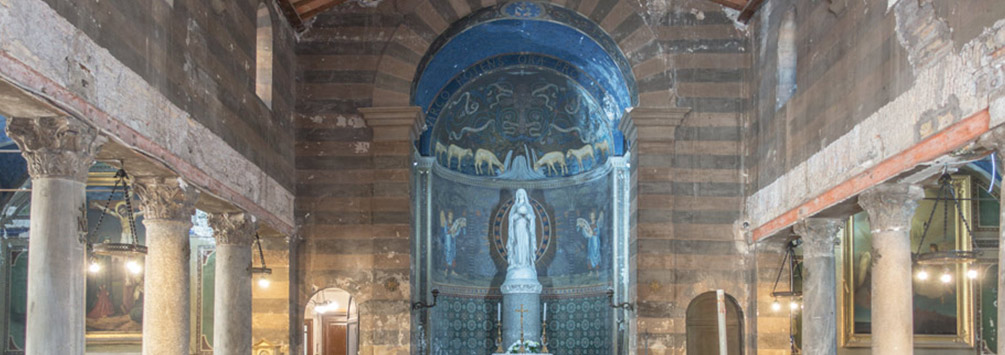
Now let us immerse ourselves in this medieval interior The main nave is separated from the side naves by a row of five columns (on each side) with Corinthian capitols, which support the architrave. It is covered by an opened roof truss, the side naves are combined, while light enters inside through semi-circular windows. The whole decoration is from the XIX century and has only been renovated in recent years and rather superficially at that. It must be admitted, that both the paintings of the apse and the stripes adorning the church are in a shabby condition. One interesting object (original can be found in a museum) is an altar found in the apse, reportedly from the XII century with a relief depicting the Lamb of God. Behind it on a massive column there is a sculpture from 1858 showing Our Lady with a Globe.
Nothing has been left over from medieval decorations, only descriptions of the interior inform us that a painting was found there, attributed to the workshop of Pietro Cavallini himself. The only truly old element of the interior is a mosaic cross from the time of Pope Urban VIII with accompanying four bees, whose design was to have been completed by Francesco Borromini.
We do not know what the original church façade looked like. The one we see today, is an effect of a modernization completed at the end of the XIX century, when the aforementioned Baroque elements where removed. An outstretched tympanum accentuates the main nave, while the side naves appear as if they were only walls flanking the façade on both sides, not especially integrated with the whole. The terracotta bas-relief depicting Our Lady among pine trees is not very old (1966) and it reminds us of the original name of the church. Why is it then presently dedicated to della Cappella and which chapel is the one in question? The answer, still today, arises controversies. The most convincing version says that it is all an effect of a misunderstanding. On an inscription tablet there was an inscription informing of the church name: QV(A)E APPELL(ATVR) AD PINEA(M). From the combination of the words E APPELLA A, a Cappella was created (meaning chapel), although initially it was to be PINEA, meaning a pine. Another version is based on a hypothesis that the name comes from cupellae, meaning barrels, which were produced here by coopers in the XVI century.
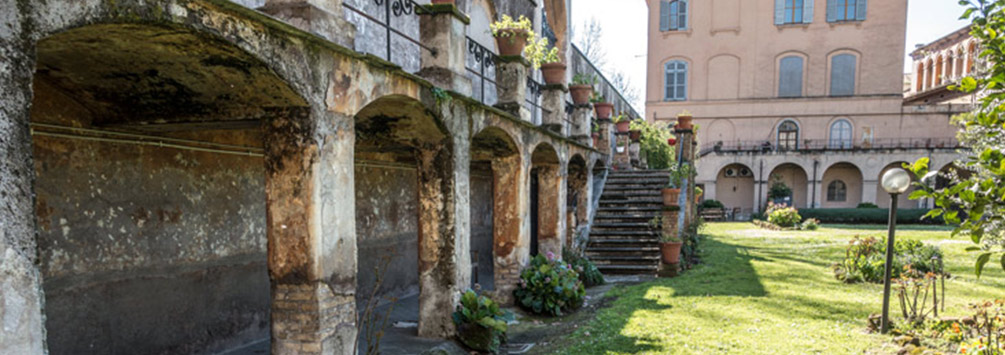
Nevertheless, this forgotten part of the Trastevere must definitely be visited, to immerse ourselves in the unprecedented atmosphere of the surrounding streets, stand on the small square in front of the church and peek inside the garden of the nearby retirement home, and perhaps we will be able to rest a while under one of the orange trees found inside.


































